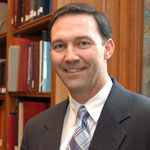Advent is the celebration of God’s coming into the world to save, redeem, and transform what is broken and lost.
An important part of Advent, of course, is the celebration of Jesus’ birth. But the Church is constantly tempted by the modern focus on history to reduce that birth to a historical event like your birth and my birth. Scripture declares the birth of Christ is much more: it is the inauguration of God’s plan to complete and perfect creation. This seems to be what Matthew means when he opens his gospel with the words, “An account of the genealogy of Jesus the Messiah” (Matthew 1:1). The word here translated “genealogy” is the same word used as the Greek title for the book of Genesis. Thus, the birth of Jesus reminds us that God in Jesus Christ is bringing creation to its intended end.
One way to keep this larger meaning of Advent in view is to focus on the theme of creation in the Old Testament lectionary readings. To that end it may be helpful to recall a few key elements of the biblical notion of creation:
*The word “create” (Hebrew bara) seldom refers to God making something out of nothing; rather, the word has to do with establishing order out of disorder; disorder is typically symbolized by water that must be put in boundaries (see Genesis 1:1-10).
*Wilderness is the counterpart of water in that it also symbolizes the untamed and unmanageable parts of the world; therefore, wilderness, which is often a place for testing (Exodus 16-17; Mark 1:12-13), is a trope for chaos, for that which God wants to put in order for the sake of humankind.
*Many enemies of God and God’s people in the Bible appear as forces who act against creation, not just as historical figures. Thus, the Pharaoh in Exodus tries to thwart God’s plan to bring blessings to all humankind through the Israelites (see Exodus 1:7 which describes the Israelites as fruitful and prolific, as humankind was intended to be; Genesis 1:30).1
Keeping these essential ideas in mind, it may be helpful to recall that the one Old Testament passage quoted in all four gospels is filled with creation language and imagery: Isaiah 40:3-5 (Matthew 3:3; Mark 1:2-3; Luke 3:4-6; John 1:22-23). The Isaiah passage portrays a highway that is to appear in the wilderness. The picture here is of the place one can normally not travel being the very place God will travel to rescue God’s people. This passage, of course, is part of the so-called Second Isaiah (Isaiah 40-55), a portion of the book that dates to the Babylonian exile (587-539 B.C.E.). In Isaiah 40-55 God is frequently called “Creator” (43:1, 15) and the salvation of God’s people is described symbolically as an act of creation: “For thus says the Lord, who created the heavens (he is God!), who formed the earth and made it (he established it; he did not create it a chaos, he formed it to be inhabited!).” (45:18-19).
This background gives an important cast to several lectionary passages for Advent. Isaiah 35, which is very similar to Isaiah 40, speaks in beautiful detail about the wilderness being transformed: “The wilderness and the dry land shall be glad, the desert shall rejoice and blossom; like the crocus it shall blossom abundantly” (35:1-2a). The highway in the wilderness shall be free from predators (35: 9), another sign of God restoring creation to its original intent (see Isaiah 11:6-9; Hosea 2:18).
The lectionary readings that focus on Zion (Isaiah 2:1-5) and the king of Israel (Psalm 72) likewise rely on these creation themes. Zion and its temple are conceived as a paradise, as the center of God’s creative purpose (see Psalm 46; Ezekiel 47). Thus, Zion is the place from which God will make wars to end (Isaiah 2:4). The ideal king, portrayed in Psalm 72 will rule by God’s righteousness (72:1, 2, 7). Righteousness represents the order of the world (the opposite of chaos) manifest in right human relationships (Psalm 72:4, 12-14).2 No wonder Psalm 72 has been read as prefiguring the life and ministry of Jesus.
If the preacher pays attention to the creation theme that pervades so many Advent texts it may add richness to the proclamation of the season. Attention to creation connects us to the grand drama of salvation that began in Genesis 1. Advent reminds us that the groaning of creation in “bondage and decay” (Romans 8:18-25) is answered by God’s coming in Jesus Christ. This coming is anticipated by the many texts that speak of God creating, and re-creating the world and the human heart (Psalm 51:10).
1 For further reading see Terence Fretheim, God and World in the Old Testament: A Relational Theology of Creation. Nashville: Abingdon Press, 2005.
2 J. Clinton McCann, Jr. “Righteousness, Justice, and Peace: A Contemporary Theology of the Psalms,” Horizons in Biblical Theology 2001, pp. 1-12.

